Image | Length | Bow Weight | Draw Weight | Takedown? |
|---|---|---|---|---|
Samick Sage Recurve Bow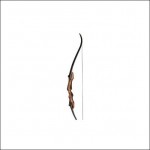 See on Amazon.com | 62 Inches | 3.4 lbs How to: choose arrows, draw weight, and tune your recurve | 30, 35, 40, 45, 50, 55 lbs. | Yes |
If you’re looking for the best Recurve Bow on the market in the “Very Tight Budget” category, you just found it.
I get an average of 3 questions per day from archers looking to buy an affordable recurve for beginners, and the Samick Sage is brought up in at least half of all these questions. There’s good reason for that.
Let me tell you a little bit about the people who created this bow first. Samick Sports is a Korean company that’s been in the industry since 1975. Since then, they have grown so much as to have their bows sold in over 50 different countries, and they are known for sponsoring quite a few of the world’s best competitive archers. So what exactly did Samick do to make the Sage such a great piece of equipment? Let’s examine all the parts separately.
If you aren’t sure what kind of draw weight is right for you, check out my Recurve Bow Draw Weight Chart to settle this matter.
The Riser – Top Quality
What immediately grabbed my attention the first time I picked up the Sage was just how classical and majestic the riser is; almost as if it was taken straight out from the Lord of the Rings. The whole thing is extremely simple and effective in design as well as very well-polished. In fact, this simplicity is the exact reason why this bow is so reliable and such a perfect choice for a beginner – since there are no “bells and whistles,” there’s virtually no chance of anything 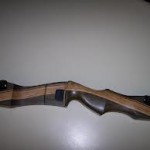 breaking. The riser comes drilled, so if you want to install an arrow rest rather than shoot “off the shelf,” or if you’d like to attach a solid recurve bow sight, stabilizer, or arrow quiver, you’ll do so in a matter of minutes. What about the materials?
breaking. The riser comes drilled, so if you want to install an arrow rest rather than shoot “off the shelf,” or if you’d like to attach a solid recurve bow sight, stabilizer, or arrow quiver, you’ll do so in a matter of minutes. What about the materials?
The riser is made from laminated Olive Dymondwood and Hard Maple These materials are exactly what makes it so resilient and long-lasting, and probably the reason it just looks so damn awesome too. Anything else?
Nope, nothing! And as I said earlier, simplicity is exactly what makes this bow effective. The riser was designed to be durable, easy to tune and customize (the drilled holes for extra accessories), and beautiful. And it delivers.
Samick Sage Limbs – Resilient & Duable
One of the reasons I decided to write this Samick Sage review is because of how much I enjoyed the limbs on this recurve. I am used to having limbs on bows in this price range twist on me from time to time, and since I really hate the entire limb straightening process, I was kind of wary of how things would turn out for me with the Sage.
In the close to 2 years that I have owned and used this bow, however, I haven’t had a case of twisted limbs once. Not even once. I thought at first that I was just lucky, but when I checked out what other people on ArcheryTalk and similar archery forums had to say, I didn’t find a single case of limb-twisting mentioned. That’s enough confirmation for me. So, what exactly are the limbs made of?
Hard maple. As is usually the case, the maple is laminated with a layer of fiberglass (black in this case), to give the limbs more durability and resistance to bending. After 2 years of using my bow, I can only feel one tiny little bump under the laminate.
The limbs are quite long, but that’s not a problem as the Samick Sage is a Take down, so you can detach the limbs from the riser to make storage and transportation easier. In fact, the screws can be unscrewed with just you fingers, so no tools / hex keys are necessary. That’s not all though – there is one more important thing you should know about the limbs.
The tips are reinforced with Phenolic plasic, which means that the bow accepts FastFlight™ strings. So if you ever decide to upgrade the string on your recurve, you should sleep well knowing that your bow is ready for it. This is really a treat, and personally I know of no other bow in this price range that has reinforced limb tips.
How It Shoots & Real Life Performance
This is always the most critical part. It’s not uncommon for a recurve bow to have high quality elements but still somewhat under-deliver when an arrow is shot. All the parts must come together in perfect harmony, otherwise drawing the bow will only result in disappointment. So how does the Samick Sage fare in this department?
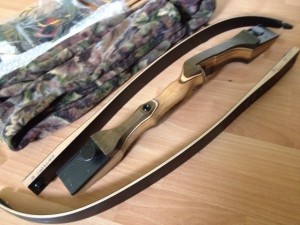 I’ll keep the answer short: this is the best bow that I have ever shot in the “up to $200″ price range, period. No if’s or but’s. The draw is really smooth, there are no noticeable vibrations at all during release, it’s exceptionally quiet -which is really important on a hunting trip. Due to the bow’s length of 62” it is really accurate, and can even (to a certain degree) compensate for stance and form issues that the archer shooting it might have. What about arrow flight?
I’ll keep the answer short: this is the best bow that I have ever shot in the “up to $200″ price range, period. No if’s or but’s. The draw is really smooth, there are no noticeable vibrations at all during release, it’s exceptionally quiet -which is really important on a hunting trip. Due to the bow’s length of 62” it is really accurate, and can even (to a certain degree) compensate for stance and form issues that the archer shooting it might have. What about arrow flight?
This will obviously depend on what drawing weight you choose. The higherthe drawing weight, the straighter the flight of the arrow will be and the more deadly its on-hit effect. The Samick Sage is available in 35, 40, 45, 50 and 55 lbs. versions. For the best performance, I recommend getting a 40# (or higher) version and staying away from the 35# one, unless the bow is intended for a youth male or an average-sized female shooter. You’ll be able to shoot targets from as far as you need to, and expect tight arrow groups from well over 30 yards.
Is The Samick Sage Good For Hunting?
As long as you get the 40# draw weight model, you’ll harvest deer from 30+ yards without any problems if you place your shot correctly. For larger game (elk for example) you might need to go slightly beyond that and get a 45# (or heavier) version of the bow. The Sage is definitely not the smallest recurve on the market, but it’s still compact enough to make it easy to carry around and maneuver in the field.
Just keep in mind that the suitability of any bow for hunting will depend not only on the draw weight, but also on your draw length. The longer your draw length, the more kinetic energy your arrows will carry and hence the deeper they will penetrate your target. As such, if your draw length is 26″ or less, you will likely need to make up for it by getting a heavier version of the bow if you want to hunt (45# minimum, even for deer).
Samick Sage Review – Summary
A fellow archer put it into words far better than I ever could. Here is what he said about the Sage:
I think the Sage is the best return on investment available for entry level archers. I recently bought one for my son. Even after reading all of the positive reviews, the quality and versatility were far beyond my expectations. I would have no qualms about hunting with this bow. I couldn’t be happier with this purchase. If I had a third thumb, it would be up too. Great job, Samick!
I’ll offer my own summary as well, of course: if you want to experience the joy of shooting your own reliable, majestic recurve, or whether your a more advanced archer looking for a new experience, do yourself this big, once-in-a-life-time favor, and give the affordable Samick Sage a try. I recommend you start by checking out Today's Amazon.com price on the Samick Sage.

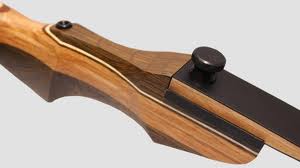
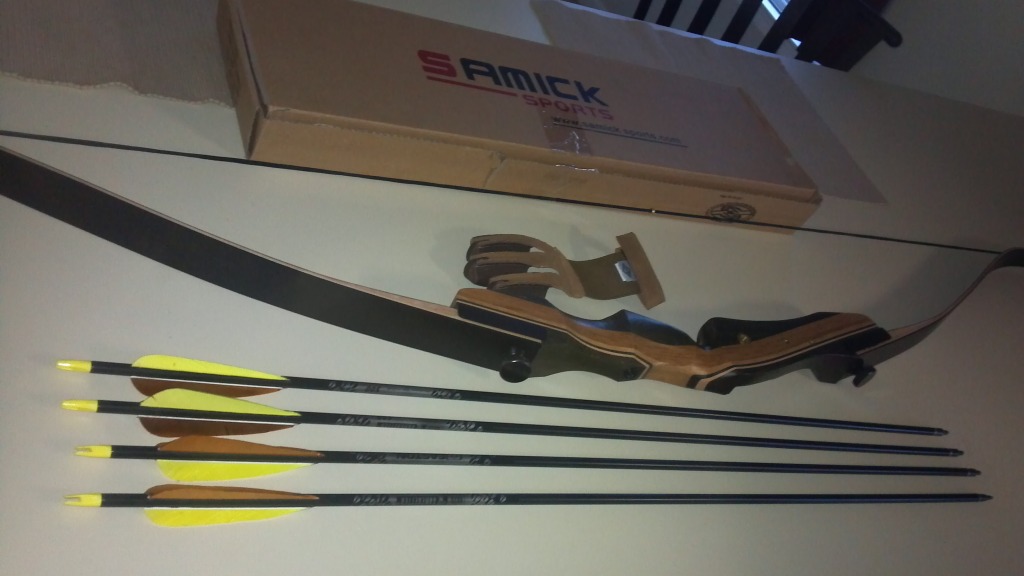
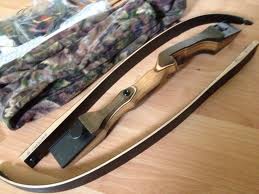

I totally agree about your coments.
Have a question.
What grain weight do you recommend for this Bow?
I have a 62″, 40# Samick Sage and I would like to have a reference.
Regards
I’m considering the Samick Sage strictly for target. I’m 6′ 200lb. I’m wanting this so I’ll have something to shoot with my daughters 13 & 15 while they’re shooting their 25lb compounds. I’m a nut for accuracy (nat’l master in other shooting sports), but would love to have something fun and not have to wrestle when pulling arrows out of targets. I’m stuck on the 35 or 40# draw weight. Am I off base, if not would 35 be enough or 40 more likely to make me happy? If I miss, I want the fault to be on me, not the equipment. Our shooting distances will likely not exceed 20 to 25yds.
Thanks for your input.
JB
Hi Broome. a 35# will be definitely enough for 20 to 25 yard target practice, although you’ll need a 40 if you ever want to hunt in the future. If you are absolutely sure though that hunting is not for you, then have at the 35.
I’m buying this bow second-hand and the seller is not sure of the draw weight. Is there a way to tell from the bow?
The draw weight should be written on the bottom limb facing the shooter
Josh, on the bottom inside limb of the bow there is small white lettering. The first number is the length of the bow and the second number is the draw weight. Mine is a 50# bow so it says 62-50.
I bought the sage about 3 weeks ago, and I can’t say enough good things about it. It shoots like a dream. I’m 5’10”, 200 lbs and an experienced compound bow hunter. I went with the 50# draw, and it works great for me. With these limbs my effective distance is governed by my skill level. Great buy. I highly recommend it.
I’m a 6’2 adult with WS = 76″ and draw length of 30.4″.
I’m a beginner and I think this bow is beautiful. Would love to start out on it.
Any reason the 40# version would be an issue for me with 30″ draw length?
Hi, I was wondering if this bow would be alright for me to use. I’m 5’9″, from what I’ve read and calculated I would need a bow at least 66″, but they’re hard to find in a decent price range.
hello! I am trying to figure out what weight I should get. its for my boyfriend. he is 5’5 160lbs. he is a beginner. would a lighter one be better? 35# or a 50-55#?
Hi to all. I’m new in archery. I found it very interesting. I really want to start it, and I think I will buy the Samick Sage takedown. But I’m afraid because I saw some archery accidents that a guy had an arrow, or part of it, through his hand. Why that could happen? Is there a link or some safety things you can give me so I could be sure that that wouldn’t happen?
Thanks very much, by the way.
Cheers
What type of arrows can be used, ie. type of fletching for the arrow rest mounted on the Samick????
I have the Journey model in 64 inch length and 30 lb draw. My draw length is only 26 inches so I pull about 25 pounds. This bow works extremely well with Easton 1616 aluminum arrows. I have yet to find a better arrow for this weight bow. For the money I love this bow! And I’ll be purchasing 55 pound limbs soon and get myself ready for Utah’s mule deer season next year (2016)!
I’m looking to buy some of the plastic limb pockets that come almost all of these type of bows. Having no luck finding any tom purchase. Got an Idea?
Tammy, this bow would be good for you but get around 35# draw unless you intend to hunt with it.
I bought 4 Sages. One 30lbs, one 35lbs and two 40lbs. These were for my 12 YO daughter, a 16, 18 and 25 YO sons respectively. The weights were heavy for them so I bought 22lbs and 30lbs Polaris limbs for my daughter and eldest son. The 30lbs ended up to my 16 YO son, and the 35lbs to my 18 YO son. Now I have the two extra 40lbs limbs for myself! Awesome bows.
Looks like PAPA is a lucky man! LOL!
I’m a 62 year old woman, fairly strong for my age/sex, and 5’6″. I’m new to archery. Would the Samick Sage be good for me?
Hi…am looking at a starter bow and pretty sold on the sage. Just wondering about the 30# or the 35#. Figured my draw length at 26″, Im 5″2…Id like to use this with my son who is 11. Hes slight but strong and Im no princess..so wondering what to go with. Is there a big difference?? And…big thanks! Great informative, easy to use site! Ive learned heaps in the last few hours!
Kia ora 🙂
Hi, I’m wanting to get back into archery I used to shoot recurve years ago when I was younger. I’m 56 years old & have had open heart surgery so my strength is not as great as it used to be. According to your chart I should use a 40-55lbs draw. I’m really only going to use it for target shooting.Do you recommend the 40 lbs.or less ??
If it’s only going to be for target shooting then 35# is absolutely fine.
I’m 71 years old and have had a heart procedure recently. I went with the 25# Sage,perfect for backyard recreational target shooting.
I am a fairly new (one year) archer using now, a 37b Falco Spirit. I started off with an SF Take Down 25lb as I had never shot before and I am now 81 years of age. Can’t seem to get 40lb limbs for the SF as I thought I would like a decent recurve as well. So was considering a 40lb Sage but in no rush and all the reviews look good.
Any my question at this time refers to a Samick Equus 35lb which I bought secondhand. I have only just found out that it has a slight twist in the top limb. Any suggestions please on correcting it.
Any suggestions at all would be appreciated. I am a field archer up to 48yards and my Falco just makes it with a lot of gapping.
Purchase a Sage recurve bow 62″ today at Bass Pro. My first bow and was excited to get home and put this thing together. Only problem was the holes in one of the limbs did not align perfectly with the holes in the riser. Poor workmanship and poor quality control. This thing goes back tomorrow to exchange for a different brand. No reason to try another one if such a poor quality comes out of their factory.
Hey just wanted to ask if there’s a retailer other than amazon,
cause amazon cant ship this Samick Sage bow to my country.
Any help will be appreciated…:}
Lancaster Archery Supply (http://www.lancasterarchery.com) is very good (I am a customer, not an employee).
Two questions:
1) What size should I get as a new recurve shooter? I have a 31″ draw on my compound. I am 6’2″
2) Can I use the same carbon arrows that I use on my compound with the recurve?
I am a recent beginner archer, been shooting about a hundred arrows twice per week for about 5 months. I have a #30 Samick Sage bow. I’m getting stronger and plan to get some #40 or #45 limbs soon. I have a 28 to 29 inch draw length. In your opinion, should I order the longer Samick Journey limbs? I have heard that longer limbs have a smoother action.
Excellent website! I will check this site first when I have archery questions.
This sounds like a nice bow, but I’m conflicted between this and the OMP Mountaineer 2.0. My budget is around $150. I’ll be using it mostly for target, but I’m alos planning to us it for hunting deer. My current draw is 40#.
Would a quiver attachement, such as a kwikee combo, attach to the bushings?
http://www.kwikeekwiver.com/kwikee-kwiver/combo-4-arrow-quiver-lost-xd.html
According to this chart
Calculated Draw Length = Bow Size:
14″ to 16″ = 48″ Bow
17″ to 20″ = 54″ Bow
20″ to 22″ = 58″ Bow
22″ to 24″ = 62″ bow
24″ to 26″ = 64″ to 66″ bow
26″ to 28″ = 66″ to 68″ bow
28″ to 30″ = 68″ to 70″ bow
31″ and longer = 70″ to 72″ bow
I need a 68 inch bow, but according to the guy at the store, I should get a Samick sage with 62 inch limbs.
So confused? Does bow size go by height or drawer length? Mines approx 27
Samick as a brand is not as good as everyone thinks. They only make the good bows for the Olympics and others who are sponsored by them. The retail versions are made to brake on the grounds of planned obsolescence. If I had a pound for every person I spoke to that had a Samick bow that split a bottom limb i’d be rich.
Wonder if you can help, I have a Samick but it shows no Lb rating on the limbs, it does have the following written on it, what does all this mean? A2031508 on the other one it says 2031508 with a 820 added at the end with a large space between the two sets of numbers….. anybody shed any light?